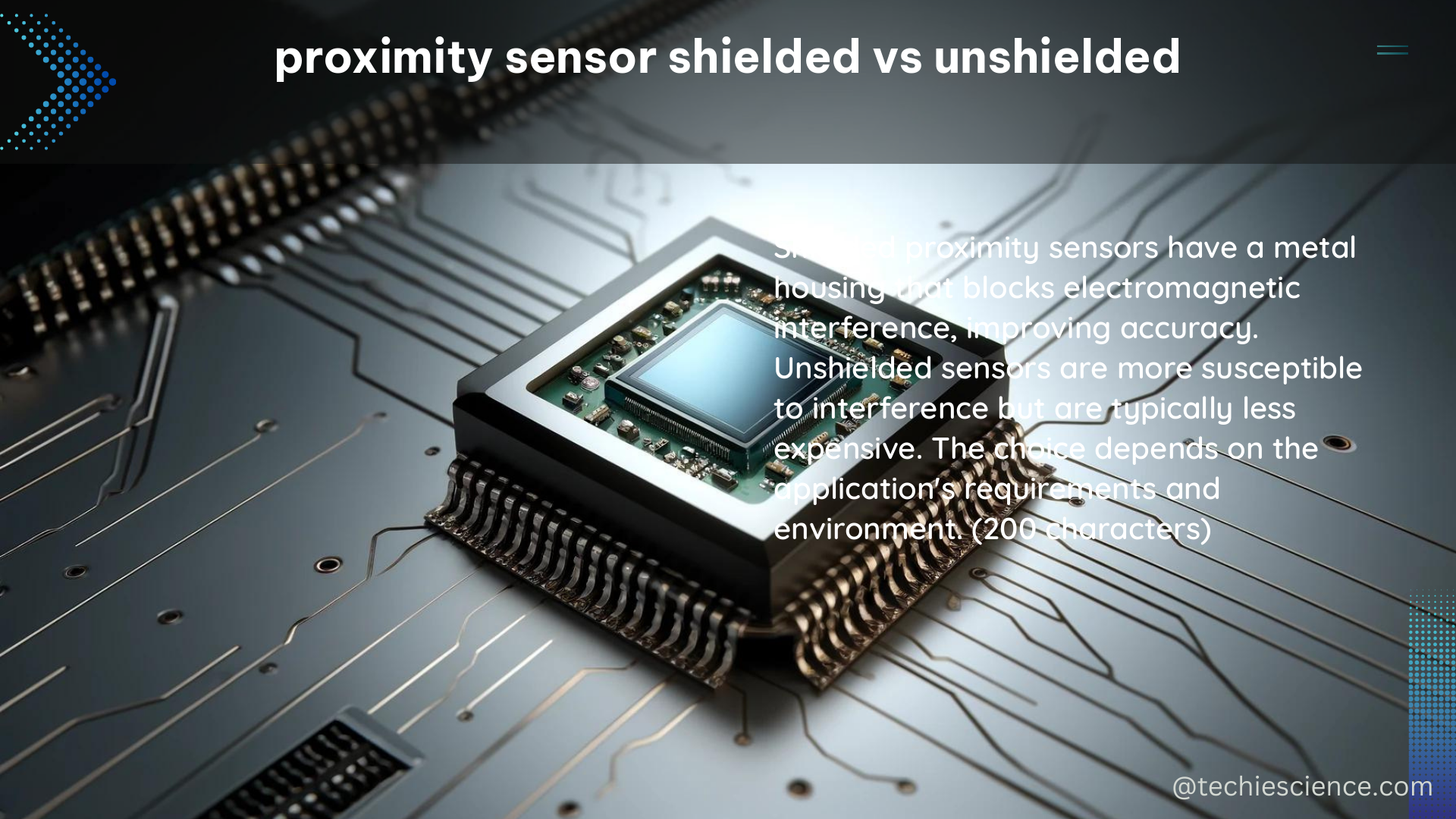Proximity sensors are essential components in various industrial, automation, and automotive applications. These sensors come in two primary varieties: shielded and unshielded. Understanding the technical differences between these two types is crucial for selecting the right sensor for specific use cases, ensuring optimal performance and reliability.
PBT Sensor Head Length Difference
One notable distinction between shielded and unshielded proximity sensors is the length of the sensor head. Shielded proximity sensors typically have a shorter sensor head length, while unshielded sensors have a longer head length. This difference is primarily due to the design of the sensor head material, which is commonly made of Polybutylene terephthalate (PBT).
In shielded proximity sensors, the PBT head is buried into the sensor housing, resulting in a shorter overall head length. Conversely, in unshielded sensors, the PBT head is exposed, leading to a longer head length. This difference in head length can have implications for the sensor’s installation and integration within a system.
Sensing Distances Difference

Another key distinction between shielded and unshielded proximity sensors is their sensing distances. Unshielded proximity sensors generally have a longer sensing distance compared to their shielded counterparts. This is because the magnetic field of unshielded sensors is larger and stronger, allowing them to detect metallic objects from a greater distance.
In contrast, shielded proximity sensors have a weaker magnetic field due to the sensor housing, resulting in a shorter sensing distance. The typical sensing distances for shielded and unshielded proximity sensors can vary depending on the specific sensor model and manufacturer, but the general trend is that unshielded sensors have a longer range.
| Sensor Type | Typical Sensing Distance |
|---|---|
| Shielded Proximity Sensor | 2-20 mm |
| Unshielded Proximity Sensor | 5-40 mm |
Installation Methods Difference
The installation methods for shielded and unshielded proximity sensors also differ. Shielded proximity sensors can be installed with their detection surface flush with the installation surface, as the magnetic field is confined to the sensor head. This allows for a more compact and streamlined installation, reducing the sensor’s vulnerability to damage during operation.
On the other hand, unshielded proximity sensors require the sensor head to be exposed beyond the installation surface. This is because the magnetic field of unshielded sensors can extend beyond the sensor head, necessitating the head to protrude from the installation surface. This difference in installation methods can impact the overall design and layout of the application.
Mutual Interference and Magnetic Interference
When installing multiple proximity sensors side by side, it is essential to maintain sufficient spacing to prevent mutual interference between the sensors and avoid magnetic interference. For shielded proximity sensors, the recommended spacing should be equal to or greater than twice the sensor’s diameter. This spacing helps to minimize the risk of magnetic interference between adjacent shielded sensors.
In the case of unshielded proximity sensors, the required spacing is even greater. Unshielded sensors require a distance equal to or greater than three times their diameter to prevent mutual interference and magnetic interference. This increased spacing requirement is due to the stronger and more extensive magnetic field of unshielded sensors, which can cause interference with neighboring sensors.
Additional Considerations
When selecting between shielded and unshielded proximity sensors, there are a few additional factors to consider:
- Environmental Conditions: Shielded sensors may be better suited for environments with high levels of electromagnetic interference (EMI) or where the sensor needs to be protected from external magnetic fields.
- Mounting Constraints: The installation requirements for shielded and unshielded sensors may dictate which type is more suitable for a particular application, based on available space and mounting options.
3 Sensor Sensitivity: Unshielded sensors generally have a higher sensitivity to metallic objects, making them more suitable for applications where precise detection is required. - Cost: Shielded proximity sensors may be slightly more expensive than their unshielded counterparts due to the additional housing and shielding components.
By understanding the technical differences between shielded and unshielded proximity sensors, engineers and technicians can make informed decisions when selecting the appropriate sensor for their specific application, ensuring optimal performance, reliability, and cost-effectiveness.
References:
- Proximity Sensors FAQ – Intech Chennai: https://intechchennai.com/faq/proximity-sensors.php
- Capacitive Sensing: Ins and Outs of Active Shielding (Rev. A) – Texas Instruments: https://www.ti.com/lit/an/snoa926a/snoa926a.pdf?ts=1705676488690
- What is the difference between Shielded and Non-shielded inductive proximity sensors? – Schneider Electric: https://www.se.com/us/en/faqs/FA119479/
- What is the difference between shielded & unshielded proximity sensors? – DesignSpark: https://www.rs-online.com/designspark/what-is-the-difference-between-shielded-flush-mountable-and-non-shielded-non-flush-inductive-proximity-sensors
- Shielded Vs Unshielded Proximity Sensor: 3 Big Differences You Need to Know – Lorentzzi: https://lorentzzi.com/shielded-vs-unshielded-proximity-sensor-3-big-differences-you-need-to-know/

The lambdageeks.com Core SME Team is a group of experienced subject matter experts from diverse scientific and technical fields including Physics, Chemistry, Technology,Electronics & Electrical Engineering, Automotive, Mechanical Engineering. Our team collaborates to create high-quality, well-researched articles on a wide range of science and technology topics for the lambdageeks.com website.
All Our Senior SME are having more than 7 Years of experience in the respective fields . They are either Working Industry Professionals or assocaited With different Universities. Refer Our Authors Page to get to know About our Core SMEs.